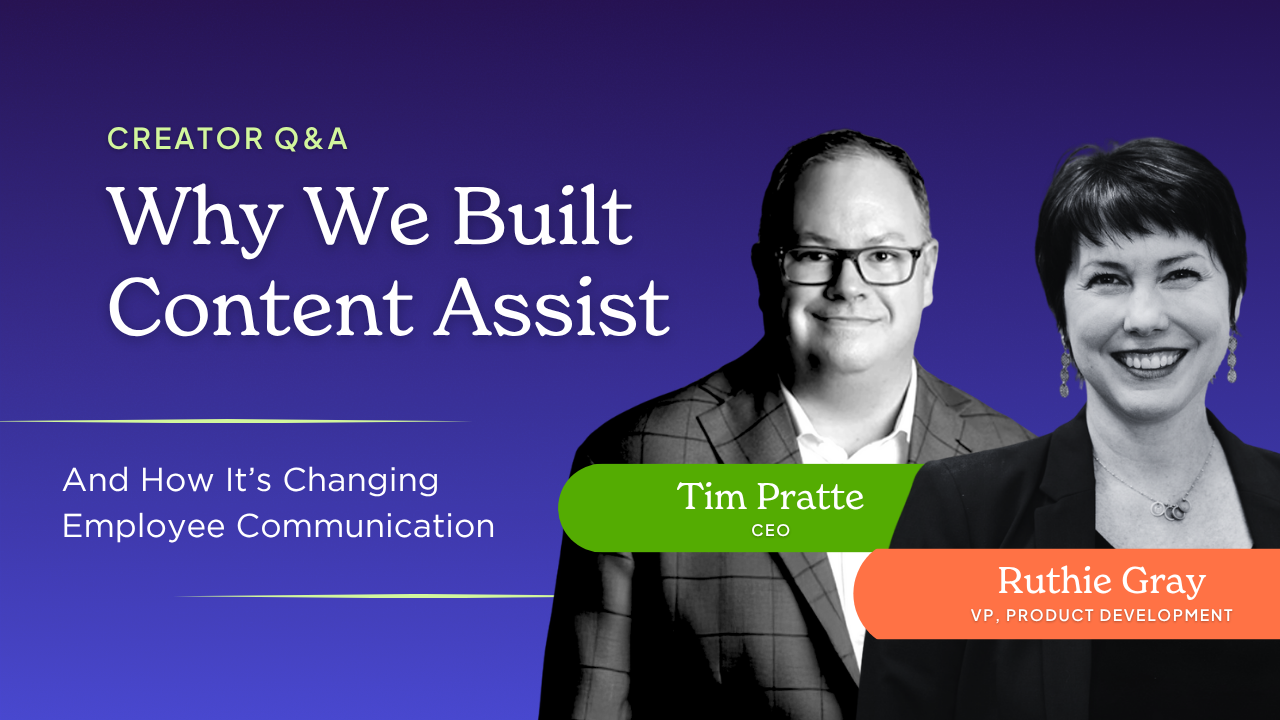Creator Q&A: Why We Built Content Assist — and How It’s Changing Employee Communication

Ask any HR or broker team what quietly eats up all their time: it’s not only meetings or communication — it’s context switching.
Jumping from topics like plan updates to enrollment reminders to internal announcements — all while trying to sound consistent and professional. Each task alone is simple; together, they eat up entire days. And most teams don’t have dedicated communicators or extra bandwidth to make it any easier. Emails, texts, intranet posts. Policy updates. New-hire welcomes. IT outages. Wellness events. Safety reminders. Change management. Recognition notes. All important — and all competing with everything else you have to do.
That’s what Content Assist was built to solve. An AI-powered writing assistant built into Selerix Engage that moves your employee communications from idea to ready-to-send in seconds — all within the platform. And it’s not limited to open enrollment or benefits messaging, either. You can draft clear, on-brand communications for whatever you need to say, year-round — regardless of writing skill.
We recently asked Selerix CEO Tim Pratte and Ruthie Gray, VP of Product Development, to take us behind the scenes on Content Assist — why they built it, how it’s different, and what teams are doing with it right now.
Here’s how it went.

What sparked the idea for Content Assist?
Ruthie Gray:
Honestly, listening. We streamlined the message-creation flow in Engage and customers said, “Great — now help me write the message.” Not just for OE, but for everything: policy changes, office closures, program launches, manager notes. Content Assist is the last-mile helper.
Tim Pratte:
We wanted to do something with AI that was actually useful and not hype. HR pros are great communicators under unreasonable time pressure. They didn’t need AI to be clever; they needed it to be effective and get their work done faster. This is a partner that helps people get to clarity faster.

How does it actually work?
Ruthie:
You can give Content Assist a simple prompt, like “announce new PTO policy,” “draft a safety reminder,” “post a wellness challenge kickoff”, choose a tone, and — if you want — upload a doc with all the context.
Tim:
Then, with a click, you can get a draft that sounds like you, inside the place you already work. Tweak, target, send. And you’re done. The magic is really the context. Because you can guide it with your own docs, it reflects your programs, your language, your voice, not some generic internet gobbledygook.

There are lots of AI writers. What’s different here?
Tim:
It’s got a job, and it’s focused on that job. It’s built to help organizations communicate — securely, inside Engage — not to chase what’s shiny. No copy-paste or uploading docs into external tools. It’s practical by design.
Ruthie:
And control. Tone really matters in HR. Sometimes you need friendly, sometimes concise. Content Assist gives that control without burying you in settings. It removes friction, it doesn’t add it.

What surprised you during development?
Ruthie:
How often teams told us they re-write the same notes. Managers announcing a schedule change. HR posting a quick reminder. IT sending outage updates. Once people saw they could kick-start any of those in seconds, adoption spread beyond benefits immediately.
Tim:
We also learned simplicity beats flash. The best feedback we’ve gotten is, “It just felt natural — like it was already a part of Engage.” For us, that’s the bar.

What are customers using it for (beyond OE)?
Tim: The first thing we noticed is how creative people got once they saw it worked. It started with benefits announcements and quickly moved into everything else, like policy changes, or new-hire welcomes, or wellness campaigns, etc. etc. That tells us people aren’t short on ideas; just bandwidth. This tool helps them share more, more confidently.
Ruthie:
And brokers love that clients can self-serve good writing. It reduces “can you wordsmith this?” while improving quality and consistency.

What’s next?
Ruthie:
For us? We’ll follow the same philosophy as always: listen first. We’ll add more AI where we can see it clearly removes friction — like smarter suggestions, better personalization — but we always want to keep it grounded in trust and usefulness.
Tim:
If it’s not making life easier and better for HR or employees and their brokers, it’s not on our list.

Content Assist is now available in Selerix Engage
No add-ons, no extra logins. Just faster, clearer communication for whatever you need to share to employees. Schedule a tour of Content Assist today!
